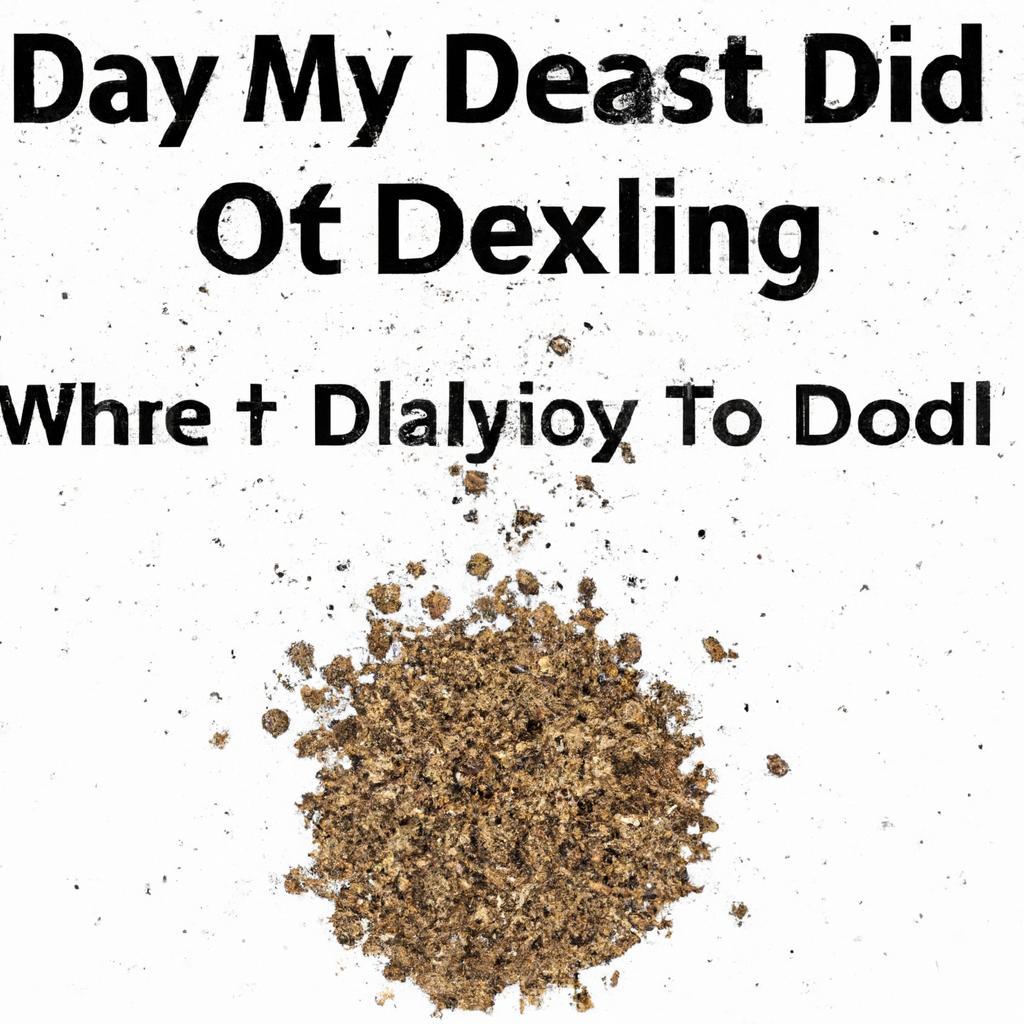Once upon a time, a dog named Max was stuck in a food rut. His owner, Sarah, noticed he was losing interest in his meals. One day, she decided to mix his dry kibble with a splash of wet food. To her surprise, Max devoured his bowl with enthusiasm! Mixing dry and wet dog food not only enhanced the flavor but also provided a balanced diet, keeping Max healthy and happy. So, if you want to revitalize your dog’s mealtime and ensure they get the nutrients they need, consider this tasty combination. Your furry friend will thank you!
Contents
- Understanding the Nutritional Benefits of Mixing Dry and Wet Dog Food
- Evaluating the Digestive Impact of Combining Different Dog Food Types
- Practical Tips for Safely Mixing Dry and Wet Dog Food
- Choosing the Right Ratios for Optimal Canine Health and Satisfaction
- Q&A
Understanding the Nutritional Benefits of Mixing Dry and Wet Dog Food
Mixing dry and wet dog food can offer a variety of nutritional benefits that cater to your dog’s specific needs. One of the primary advantages is the enhanced flavor and texture that wet food brings to the mix. Many dogs are more inclined to eat when their meals are a combination of crunchy kibble and savory wet food, making mealtime more enjoyable and encouraging better eating habits.
In addition to palatability, this combination can also provide a more balanced diet. Dry food typically contains essential nutrients and is designed to support dental health, while wet food is often richer in protein and moisture. By mixing the two, you can ensure that your dog receives a well-rounded intake of vitamins, minerals, and hydration. This is especially beneficial for dogs that may struggle with hydration, as wet food can help increase their overall water consumption.
Another significant benefit is the potential for improved digestion. Wet food is generally easier for dogs to digest due to its higher moisture content, which can aid in breaking down nutrients. When combined with dry food, this can lead to better nutrient absorption and a healthier gut. Additionally, the varied textures can stimulate your dog’s chewing instincts, promoting better oral health and reducing the risk of dental issues.
Lastly, mixing dry and wet food allows for greater customization of your dog’s diet. You can adjust the ratio based on your dog’s age, weight, and activity level, ensuring they receive the appropriate caloric intake. This flexibility can be particularly useful for dogs with specific dietary restrictions or those recovering from illness. By tailoring their meals, you can support their overall health and well-being more effectively.
Evaluating the Digestive Impact of Combining Different Dog Food Types
When considering the combination of dry and wet dog food, it’s essential to evaluate how this mix affects your dog’s digestive health. Each type of food has its unique composition, and understanding these differences can help you make informed decisions. Dry food, often rich in carbohydrates and fiber, promotes dental health and can help maintain a healthy weight. In contrast, wet food is typically higher in protein and moisture, which can be beneficial for hydration and palatability.
Mixing these two types of food can provide a balanced diet that caters to your dog’s nutritional needs. However, it’s crucial to monitor how your dog responds to this combination. Some dogs may experience digestive upset, such as gas or diarrhea, when transitioning to a mixed diet. To minimize these risks, consider the following:
- Gradual Transition: Introduce the new food slowly over several days to allow your dog’s digestive system to adjust.
- Portion Control: Ensure that the total caloric intake remains consistent to prevent overfeeding.
- Observe Reactions: Keep an eye on your dog’s stool quality and overall behavior during the transition.
Another factor to consider is the nutritional balance of the combined diet. While mixing dry and wet food can enhance flavor and texture, it’s vital to ensure that the combined meals meet your dog’s specific dietary requirements. Look for high-quality products that complement each other nutritionally. For instance, if the dry food is lower in protein, the wet food can help balance this deficiency, providing a more rounded meal.
Ultimately, the decision to mix dry and wet dog food should be based on your dog’s individual health needs and preferences. Consulting with a veterinarian can provide personalized insights and recommendations tailored to your dog’s specific situation. By carefully evaluating the digestive impact of combining different food types, you can create a feeding strategy that supports your dog’s health and happiness.
Practical Tips for Safely Mixing Dry and Wet Dog Food
Mixing dry and wet dog food can be a great way to enhance your dog’s mealtime experience, but it’s essential to do so safely. Start by ensuring that both types of food are compatible. Check the ingredients and nutritional information to confirm that they complement each other. Look for brands that offer both wet and dry options, as they are often formulated to work well together, providing balanced nutrition for your furry friend.
When introducing a new food combination, it’s wise to do so gradually. Begin by mixing a small amount of wet food into your dog’s dry food. This approach allows your dog to adjust to the new texture and flavor without overwhelming their digestive system. Monitor your dog for any signs of discomfort or allergies, such as vomiting or diarrhea, and adjust the proportions accordingly. A gradual transition can help prevent digestive upset and ensure your dog enjoys their meals.
Portion control is crucial when mixing foods. Wet food typically contains more moisture and fewer calories than dry food, so it’s important to adjust the quantities accordingly. Consider the overall caloric intake your dog requires based on their size, age, and activity level. You can consult your veterinarian for personalized recommendations. By balancing the portions, you can prevent overfeeding and maintain your dog’s healthy weight.
Lastly, always store both dry and wet dog food properly to maintain freshness and prevent spoilage. Keep dry food in a cool, dry place, and seal it tightly to keep out moisture and pests. For wet food, refrigerate any leftovers and use them within a few days. Regularly check expiration dates and discard any expired products. By following these practical tips, you can safely mix dry and wet dog food, providing your dog with a nutritious and enjoyable dining experience.
Choosing the Right Ratios for Optimal Canine Health and Satisfaction
When considering the best approach to mixing dry and wet dog food, it’s essential to focus on the right ratios that promote optimal health and satisfaction for your canine companion. Dogs, like humans, have unique dietary needs that can vary based on their age, breed, activity level, and health status. Striking the right balance between dry and wet food can enhance palatability while ensuring that your dog receives the necessary nutrients.
**Dry food** typically offers a higher concentration of calories and is often fortified with essential vitamins and minerals. It can also help maintain dental health by reducing plaque buildup. On the other hand, **wet food** provides additional moisture, which is crucial for hydration, especially for dogs that may not drink enough water throughout the day. By combining these two types of food, you can create a meal that is both satisfying and nutritionally complete.
To determine the ideal ratio, consider the following factors:
- **Nutritional Needs:** Assess your dog’s specific dietary requirements based on their life stage and health conditions.
- **Taste Preferences:** Observe your dog’s reaction to different food types; some dogs may prefer the texture of wet food, while others enjoy the crunch of dry kibble.
- **Weight Management:** Monitor your dog’s weight to ensure that the combined caloric intake from both food types aligns with their energy expenditure.
Ultimately, the goal is to create a balanced diet that not only meets your dog’s nutritional needs but also keeps them happy and satisfied. Experimenting with different ratios can help you find the perfect blend that your dog enjoys while supporting their overall health. Always consult with your veterinarian before making significant changes to your dog’s diet to ensure that you are making the best choices for their well-being.
Q&A
-
Is it safe to mix dry and wet dog food?
Yes, it is generally safe to mix dry and wet dog food. Many pet owners do this to enhance the flavor and texture of their dog’s meals, making it more appealing. However, it’s essential to ensure that the combined diet meets your dog’s nutritional needs.
-
Will mixing dry and wet food upset my dog’s stomach?
While most dogs can handle a mix of dry and wet food without issues, some may experience digestive upset if they are not used to it. To minimize this risk, introduce the mixed diet gradually and monitor your dog for any signs of discomfort.
-
Can mixing foods help with my dog’s hydration?
Absolutely! Wet dog food contains a higher moisture content, which can help keep your dog hydrated. Mixing it with dry food can be an effective way to increase your dog’s water intake, especially if they are not drinking enough on their own.
-
How should I balance the portions of dry and wet food?
The balance of dry and wet food depends on your dog’s specific dietary needs, age, and activity level. A good rule of thumb is to follow the feeding guidelines on the packaging of both foods and adjust portions accordingly. Consulting with your veterinarian can provide tailored advice for your dog’s diet.
mixing dry and wet dog food can offer a balanced diet that enhances palatability and hydration. Consult your veterinarian to tailor the best approach for your dog’s unique needs, ensuring they thrive with every meal.




